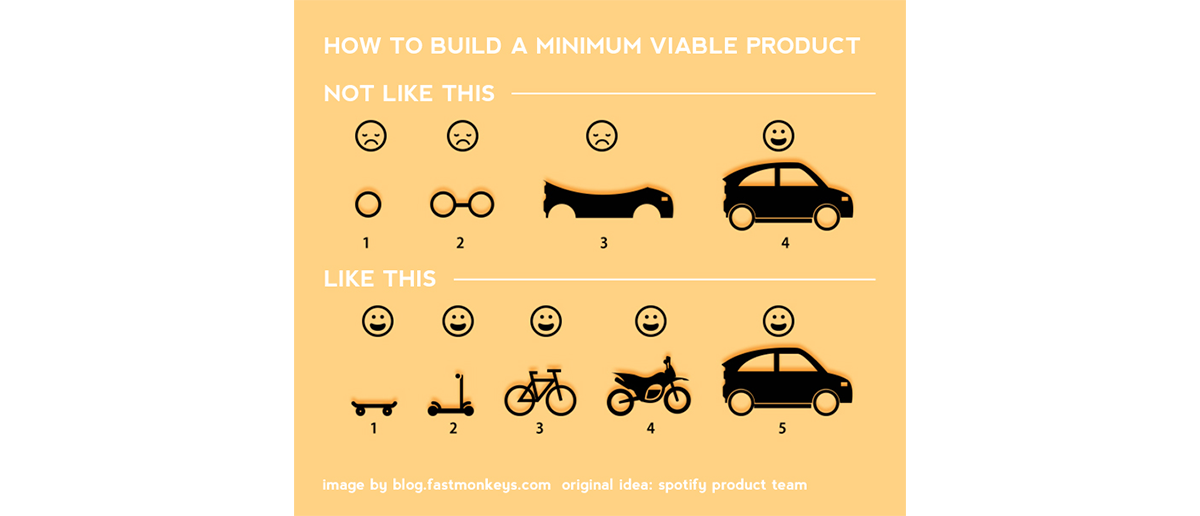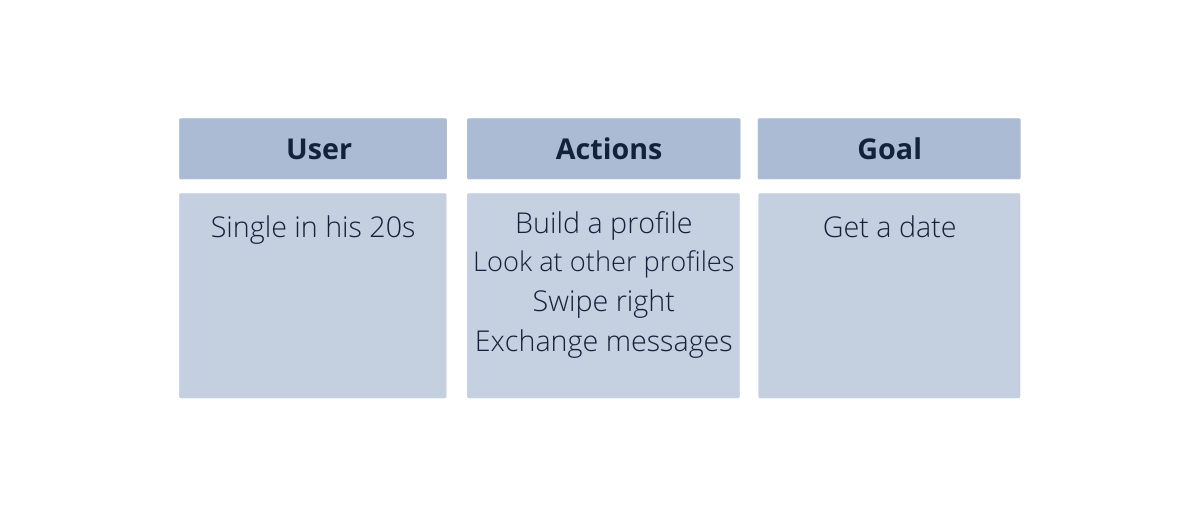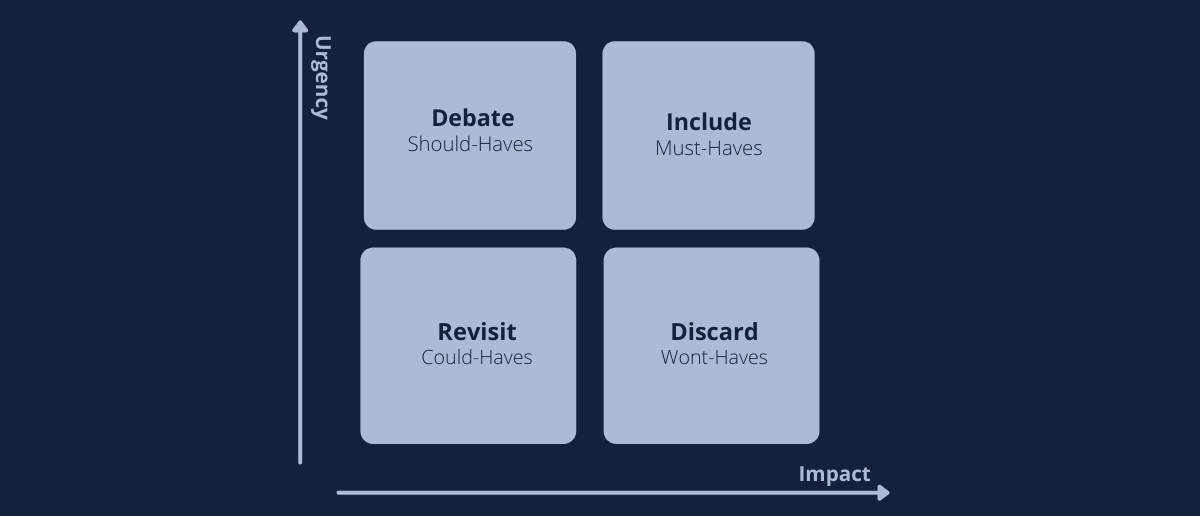
MVP: How to build a MVP in 5 Steps
Tuesday, 30 March 2021Building a software product is obviously a complex process with many deciding factors. But there are a few steps that are universal for every project. In this post, you’ll learn the steps you have to take to build a successful MVP and which tools and methods might help you.
Quick recap: What is an MVP?
An MVP is exactly what it says it is: A Minimum Viable Product. It is a minimal product, with as few features as possible, yet its functionality offers value to a target group. An MVP is not only a product, it’s a process of buildings something with its bare-bones core functionalities.
To reach the goal of a mature product, the MVP repeats a Build-Measure-Learn process over and over again. And by adding new features every cycle you get one step closer to a product including every desired feature.
Understand MVPs
Before you even start building the MVP you have to understand it. The whole purpose of building an MVP rather than a mature product is that you get a functional software product for less money and in less time.
But: it’s critical to stress the functional aspect. It’s not enough to just put out a simple product with few features and call it an MVP. The point is that it has to be viable and functional enough for your potential customers to want to use it or spend money on it.
You can’t neglect viability, without losing customers and without losing feedback. In order to attract sufficient amounts of interested users, you need to find the sweet spot between what your company can offer and what customers are looking for.
To show you what we mean let’s look at this often used graphic to describe the MVP Building Process:

Surprisingly this, and other, similar versions of it, have spread over the internet and are seen as the ultimate instructions on how to build a Minimum Viable Product.
Sure the first one is definitely not the way to go, as the first 3 versions lack functionality and don’t satisfy the customer’s wish for transportation. But the second isn’t either. Sure the skateboard satisfies the need for transportation, but if we’re talking realistically a customer that is looking for a car won’t be very happy when they have to take a skateboard every day to work.
This graphic on the other hand is a much better representation:

Assuming your customer’s need is a light source any of these potential options will satisfy him. Sure the first few versions might be less practical, but the customer got what he’s looking for, and your product offers sufficient value to them.
Short checklist
To make sure you’ve concluded every important step of building your MVP, see if you have an answer to these questions:
- Identify the core function
Are you solving a problem? Is your solution better than the existing ones?
- Map out user journeys
Do you know your users? Which are the most important ones?
- Apply the Moscow Method
What are the essentials features? Which features can you add later? Which features are irrelevant?
- Measure the feedback
What are your assumptions? How do you define success? What are your most important KPIs?
- Learn and improve
What are the main takeaways? What do you need to do better? Which features do the customer like most/least?

Identify the core function of your MVP
The core function is your starting point. Because every customer journey starts with a problem. For that, you need to offer a solution. Think about what solutions you can offer and will drive clients to your company.
This problem will be your focus point throughout the whole process. And its solution is the foundation that can be scaled depending on the market’s response.
Your task is to never get tangled up with new features or services and thus letting your focus shift. It is natural that you want to include as much as possible and give 100% from the start but in the case of MVP development that may be counterproductive.
In the case that users don’t respond to your product the way you want them to, it will be much easier for your team to identify the trigger of the problem among the core features than to find it in a multitude of features.
To guarantee that you’re actually building a simple solution your MVP has to center only around the core problem and nothing else. Each following development cycle you can add more features step by step.
These ideas on value addition will also assist you to express and sell your ideas better.
Identify User journeys
In this step, you map out all the different possible user journeys by defining your users, their user actions, and their goals. This way you will get a better understanding of your target and can easily improve the user experience.
Since a product that is viable but not convenient to use still won’t get the liking of users, improving the user experience is the most essential step to guarantee attracting more early adopters.
So simply put yourself in the user’s shoes and play through every single process stage. Think about which tasks they have to fulfill, beginning from opening the app or clicking on the website until they reach their goal, may it be completing a purchase or making a delivery.
Most likely you will have more than one possible user persona, so start with the segmentation of the different users. Think about each of their intentions, what they want to achieve, and by which actions they will achieve that. As not every target is equally loyal and lucrative segmentation also allows you to identify the most profitable and rewarding targets.
To give you a better idea about user stories let’s take a look at this Tinder user journey:

It’s your job as a company to guarantee the user can execute the actions as smoothly as possible and thus reach his goal(s).
But don’t worry there are even tools to help you out with this step: XMind, MURAL, and UXPin allow you to create a user flow diagram.
Apply the MoSCow Method
To find a start for the development process, make a list of all the features you think your product needs. Don’t worry about structure or prioritization, we’ll get there. No matter which method you are using to identify the core features, the guiding question is what is beneficial for your users? And not which features do I want to be included in my product?
To determine which features have to be included from the very first minute and which can be added later or even not at all, you should use the MoSCow Method. It divides all functions into 4 categories.
- The Must-Haves: the ones that are fundamental to start your MVP-Project and test how users will react to it
- The Should-Haves: these could extend your product idea in the next development cycles as well as add value for your target group. But they aren’t critical to the success of the project
- The Could-Haves: These are desirable operations but for various reasons, it doesn’t make sense to implement them at this point
- The Wont-Haves: Features that don’t add value at all
This method not only guarantees clarity about the product’s architecture and the user experience, but it will save you time and money in the development process.
An alternative tool that you could use for deciding on features is the prioritization matrix. The matrix differentiates features based on urgency as well as their impact.

Build the MVP
Finally, we’re getting to the point.
This step is all about speed. Your goal is to release your product into the market as fast as possible to validate your assumptions.
Keep your design simple and don’t overwhelm users with complex UI elements or animations.
Always keep in the back of your mind, that quality shouldn’t suffer during the process and that no matter which features you decided to include your product has to stay viable.
To save even more money you can chose to start with one platform for your MVP and add others later or start with cross-platform development.
Measure the feedback
After the product development has been completed you continue with the second step of the BML (Build-Measure-Learn Cycle).
To make sure that you get the right data and draw the right conclusions you need to identify your KPIs (Key Performance Indicators).
Because the only data that will be useful to you is the one that’s fit to measure your products’ success. So ask yourself:
- Which assumptions do I need to validate?
- How does success look like for my company?
- What factors indicate success?
- What do I want to measure?
- How do I want to measure it?
Let’s look at an example: say you build a mobile app with in-app purchases
Key Performance Indicators could be
- The download rate of the App
- User ratings in the App Store or Google Play
- The percentage of active users
- The percentage of paying users
KPIs look different for every project, and it’s more important to choose a few high-quality indicators rather than measuring everything, even the data that is irrelevant for you. Taking too many insignificant factors into consideration will only make your work harder as it’s easier to overlook more important data.
After analyzing the Performance Indicators separately your collective KPI results will allow you to interpret how your product is perceived by customers, which aspects they love, and which aspects need improvement.
Often times there are specific industry standards like “10% of registered users should open the app once a day”. But, as a startup, you should always live by the rule that standard is not enough. Meeting the industry average simply isn’t enough in order to scale fast.
Learn and improve your MVP
Take your user feedback really seriously and interpret which learnings you can take away for the next cycle. Don’t waste this advantage, you now know exactly what potential customers want and what they don’t want. Improve features they like and forget about the ones they don’t like.
Also, for each new development cycle, you should add one of your should-have features to test how users will react to it.
Our advice
- Just do it: overthinking is more than hindering in the process of getting your MVP on the market. You’ll have to throw perfectionism overboard and launch your product at the earliest stage possible
- Evaluate whether enough people care for your solution. Maybe you built a product that adds value and people are willing to buy, but the target group is way too small to scale your product
- Consider outsourcing your software development. The expertise of an outsourced team will allow for faster and high-quality development